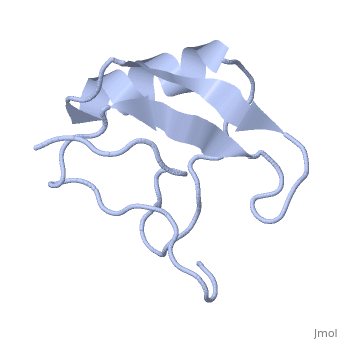Potassium channel toxin
From Proteopedia
FunctionPotassium channel toxins are various venoms which block the transport of potassium ions across the plasma membrane through potassium channels[1]. See also Vm24 Scorpion Toxin. OverviewScorpion toxins are 61- to 76-residue long proteins that modulate the gating properties of voltage-gated sodium channels. According to their mode of action and binding properties, scorpion toxins are divided into two major classes, α- and β- toxins. LqhαIT is a 64-residue scorpion α-toxin from Leiurus quinquestriatus hebraeus (yellow scorpion) venom. Scorpion α-toxins prolong the action potential by inhibiting channel inactivation. The binding site of scorpion α-neurotoxins on voltage-gated sodium channels is named neurotoxin receptor site-3. Scorpion α-toxins are similar in structure and exhibit a similar mode of action, but are very diverse in sequence and selectivity. Some scorpion α-neurotoxins show specificity for insect sodium channels and others are specific for mammalian sodium channels and exhibit different affinities to sodium channel subtypes in mammalian neurons. LqhαIT is the most insecticidal among scorpion α-toxins. About this StructureThe structure of LqhαIT was solved by NMR (1) and was found to resemble that of other scorpion toxins: a core composed of an packed against a three stranded anti-parallel and stabilized by four disulfide bonds. The Binding-SiteMutational studies identified residues of LqhαIT as important for the interaction with sodium channels (2). NMR studies of LqhαIT with a peptide derived from part of neurotoxin receptor site-3 (D4S3-S4) identified residues of LqhαIT as participating in binding to that extra-cellular part of the sodium channel (3). Both methods led to the identification of two regions on the surface of LqhαIT that participate in binding of the toxin to neurotoxin receptor site-3 on sodium channels. 3D structures of potassium channel toxinsPotassium channel toxin 3D structures
| ||||||||||||

